Valentines: Celebrating Long Term Relationships
/ Valentines is a day to savor….the power of the team of two!
Valentines is a day to savor….the power of the team of two!

 Valentines is a day to savor….the power of the team of two!
Valentines is a day to savor….the power of the team of two!

The trees of February still look starkly bare. I decided to take a closer look at some of the trees around our yard. I labelled cups and cut twigs to take inside to photograph in comfort rather than braving the cold and overcoming the clumsiness of gloves.
The pods on the tulip poplar were dramatic at close range. Many of them have already disintegrated - the seeds flying away with the wind - but these still had enough to look like ‘flowers.’
The cherry tree buds are already enlarging. I took the pictures through an 8x and 22x loupe to get the magnification I wanted.
I did the same for the oak buds….and then couldn’t resist a closer look at a wound on the twig with the 8x loupe.
The maple tree is beginning to turn reddish at the tips of the branches. And the magnified images show the buds are colorful. They’ll become more so over the next few weeks.
 My maternal grandmother would have been 107 today….and I am celebrating the part of her life I shared. The picture of her I am including with this post is from the mid-1980s when she traveled to visit me after I moved from Texas to Virginia. We sat on the patio - eating lunch and talking - while dogwood petals drifted down around us. The picture appeals to me because she was focused on the conversation rather than my husband taking her picture!
My maternal grandmother would have been 107 today….and I am celebrating the part of her life I shared. The picture of her I am including with this post is from the mid-1980s when she traveled to visit me after I moved from Texas to Virginia. We sat on the patio - eating lunch and talking - while dogwood petals drifted down around us. The picture appeals to me because she was focused on the conversation rather than my husband taking her picture!
By the time I remember her, she was running a grain mill and storage. It was a career added after more than 20 years as a wife and mother - starting rather abruptly when her husband became ill and simply continuing on for over 20 years after he eventually recovered. She had settled into the job by the time I remember going to the mill with her when my family visited during the summer. It was a special time when she and I could be together without the rest of the family crowd. There were tall stools to sit on behind the counter. Trucks filled with grain would come to be weighed….and then return after they had been emptied so that the weight of the grain could be calculated. People would come in to buy garden seeds; the drawers of seeds with their colorful picture labels were one of my favorite features of the office. Beside the back door was a large catalpa tree; I remember the long seed pods of the summer time tree.
She had never had formal training for her second career. I’m sure she applied everything she had learned in her 20 plus years of managing a household with 9 children before she started. Children and employees apparently accepted her authority without question.
My grandmother was a small person - not much over 5 feet - with white hair that appeared early on (I only know that she originally had black hair from old pictures and a portrait done in her late teens. She was always the smallest adult at the mill - and most of the time the only woman. She spoke calmly and softly. She was decisive and firm. Her style of management and leadership was effective….and ladylike…even in a business dominated by men.
I didn’t realize until years later how rare she was in the business world of the 1960s….or how much she influenced the way I wanted to be in my career relationships...and, now, the type of matriarch I have become.
I was preparing lunch yesterday - cutting up a red onion - when I realized that thin pieces of onion would be good subjects for the microscope. My goal was to do something artsy rather than scientific. See the results in the slide show below.
The outmost layer was very dry and stiff but I put a small piece on a slide. It looked like a brilliant pink stone wall under the microscope.
The next layer of the onion was more flexible but still not quite soft enough to be edible. I cut some small pieces. They looked various shades of deep purple, reddish and then clear. They dried out a bit before I got them under the microscope and I discovered that the bubbles made them just as interesting as the cell structures.
When I was dicing the onion - one of the major layers fell away and a think membrane - without color - was visible. I put several pieces of it on slides and tried some dyes/food coloring to get the green, yellow, orange, and purple images.
At the end of January I posted about the russet potato that has sprouted…and been planted in a pot to grow as houseplant. The sprouts have grown very rapidly in the past 10 days. One of the sprouts has averaged in inch of growth per day and both are thriving better than the sweet potato that is growing in the same pot (the yellow leaves in the picture are the sweet potato; perhaps the temperature even in the house is too chilly for the sweet potato to thrive).
 I have added another grow light and hope that both plants will manage to get through the winter so I can put them into the garden after the last danger of frost this spring.
I have added another grow light and hope that both plants will manage to get through the winter so I can put them into the garden after the last danger of frost this spring.
 I like watching the early rapid growth of plants. The russet potato leaves unfurl from a stalk that has bumpy ridges. And on the stems there are fine hairs. Every day there seems to be something new to notice about its growth.
I like watching the early rapid growth of plants. The russet potato leaves unfurl from a stalk that has bumpy ridges. And on the stems there are fine hairs. Every day there seems to be something new to notice about its growth.
My telescope memories are all aligned with my husband: he’s the one that had a telescope from his early teenage years onward. By the time I met him in the early 70s, he had an 8 in reflector with a mount that was mostly cast iron. It was a team effort to assemble the mount because it was so heavy! I vividly remember a night during the summer before we got married when we took the telescope out to the astronomy club’s observing site to observe a lunar eclipse. We discovered when we got back that my mother had gone out to see if there really was a lunar eclipse….that it wasn’t just an excuse we’d concocted for a late night date!
 Now - over 40 years later - the telescopes have improved significantly. My husband has a new one with much more sophisticated electronics and a lighter weight mount. He set it up on our deck. There is too much light for the deck to ever be a prime observing spot and it was a marginal night weather wise…veils of clouds kept rolling by….but it was good enough for him to check out the equipment. Everything worked. I took a picture of the moon by aligning my camera to the eyepiece of the telescope!
Now - over 40 years later - the telescopes have improved significantly. My husband has a new one with much more sophisticated electronics and a lighter weight mount. He set it up on our deck. There is too much light for the deck to ever be a prime observing spot and it was a marginal night weather wise…veils of clouds kept rolling by….but it was good enough for him to check out the equipment. Everything worked. I took a picture of the moon by aligning my camera to the eyepiece of the telescope!
So - it seem that both my husband and I are reverting to some hobbies we put aside when we were crunched for time during a peak career years…..me to my microscope and him to his telescope.
The items below were ‘the cream’ of the articles and websites I found this past week. Click on the light green text to look at the article.
Syphilis: Then and Now - The recent research on the origin and manifestation of treponemal diseases (syphilis, yaws and bejel) is reported along with the history of research about them.
Splendid Botanical Gardens Full of Stained Glass Murals - Cosmovitral in Toluca, Mexico. A botanical garden in the old city market.
A map showing gender inequality around the world - Using the Gender Inequality Index (GII) from the UN Human Development Programme. There are many parameters for the index and the US does not The full 2013 Human Development report is available here (The Rise of the South: Human Progress in a Diverse World).
Printed Eye Cells Could Help Treat Blindness - The ability to print retinal cells could lead to new therapies for retinal disorders such as macular degeneration....just one of the technologies with potential to improve the quality of life for older people. Not being able to see well produces a cascading effect on mobility and self-confidence that often leads to rapid physical decline.
 40 more maps that explain the world - From Max Fisher at the Washington Post. Take your time, enlarge the maps that interest you the most…there is a lot to learn from these 40 maps!
40 more maps that explain the world - From Max Fisher at the Washington Post. Take your time, enlarge the maps that interest you the most…there is a lot to learn from these 40 maps!
Why 259,969 people taking the same class at the same time might just be the future of education - Co-founder of Coursera, Daphne Koller reminiscing. “We need a way to integrate education much more deeply into the fabric of our lives in a lifelong way,” she says. “And that’s what we’re doing.” And several other recent articles about MOOCs and online education: MOOCs by the numbers: Where are we now? (with infographic); Two giants of online learning discuss the future of education (Salman Khan and Sebastian Thrun); and Next Gen School Board: Governance Challenges & Opportunities in the Digital Age
Fiery-red coral species discovered in the Peruvian Pacific - Coral reefs and communities in Peru are just beginning to be studied….more discoveries likely.
C40 Cities Releases Landmark Research Revealing Expansion & Acceleration of Climate Actions in Megacities - 98% say climate change presents significant risks to their populations and infrastructure; more than 8,000 climate actions are underway and 41% of those actions are at a transformative, citywide scale. C40 cities in the US are: Austin, Chicago, Houston, Los Angeles, New Orleans, New York, Philadelphia, Portland, San Francisco, Seattle, and Washington DC (details of all cities in the C40 is here) Infographic with a link to the full report included in the article.
A Beautiful Map of Global Ocean Currents - Wow! It’s worth going to the site to look at the visualization in more detail too (click on the globe to enlarge, drag to rotate OR click on the word ‘earth’ in the lower left corner of the image and then experiment with the different projections of the ocean currents at the surface).
Organic Shmorganic - An attempt to sort out the value of organic fruits and veggies for children.
 February is a stark month in Maryland. On a sunny day, I bundled up to take pictures - noticing that there is a lot of drab brown - texture becomes important in the scenes: the forest,
February is a stark month in Maryland. On a sunny day, I bundled up to take pictures - noticing that there is a lot of drab brown - texture becomes important in the scenes: the forest,
Hydrangea flowers from last summer,
 And wood grain on the deck in the afternoon sun.
And wood grain on the deck in the afternoon sun.
I’ve bought a bird feeder - advertised as ‘squirrel proof’ - and hung it so that we can see it through several windows.
A few days ago there was ice and that added a glistening coat to everything. I took pictures standing in doorways rather than venturing out on the icy surface: the frozen drips on the sycamore,
The tangled branches of the cherry with a pine providing background,
 And a pine weighed down with a burden of ice.
And a pine weighed down with a burden of ice.
That’s the outdoors scene from our area of Maryland for this month!
 Year before last on February 6, I wrote about my paternal Grandmother and the things that remind me of her. She would have been 102 today. Because she was the grandparent I knew the longest (over 50 years), she is the one that taught me the most about growing old with purpose and grace. I hope that I can do as well as she did with
Year before last on February 6, I wrote about my paternal Grandmother and the things that remind me of her. She would have been 102 today. Because she was the grandparent I knew the longest (over 50 years), she is the one that taught me the most about growing old with purpose and grace. I hope that I can do as well as she did with
(picture from late 1920s)
 It is so cold outside that the activity in the backyard is best observed through the windows. We have a male cardinal that likes our maple tree. I’m sure the female is somewhere near but I haven’t spotted her yet.
It is so cold outside that the activity in the backyard is best observed through the windows. We have a male cardinal that likes our maple tree. I’m sure the female is somewhere near but I haven’t spotted her yet.
And then there is the squirrel that discovered my makeshift birdfeeder (made with an old clamshell box that tomatoes came in and a Frisbee). I’m going to give up and buy a real bird feeder rather that feeding the squirrel family again!
 There were 10 or so deer that dashed across our yard and into the forest. I couldn’t tell what had startled them out of the neighborhood and it was all over too quickly to get a picture.
There were 10 or so deer that dashed across our yard and into the forest. I couldn’t tell what had startled them out of the neighborhood and it was all over too quickly to get a picture.
Most of my mending is for clothes but yesterday I polished off two non-clothes mending jobs that had accumulated. The jobs were particularly satisfying because they took very little time and prolonged the useful life of the items.
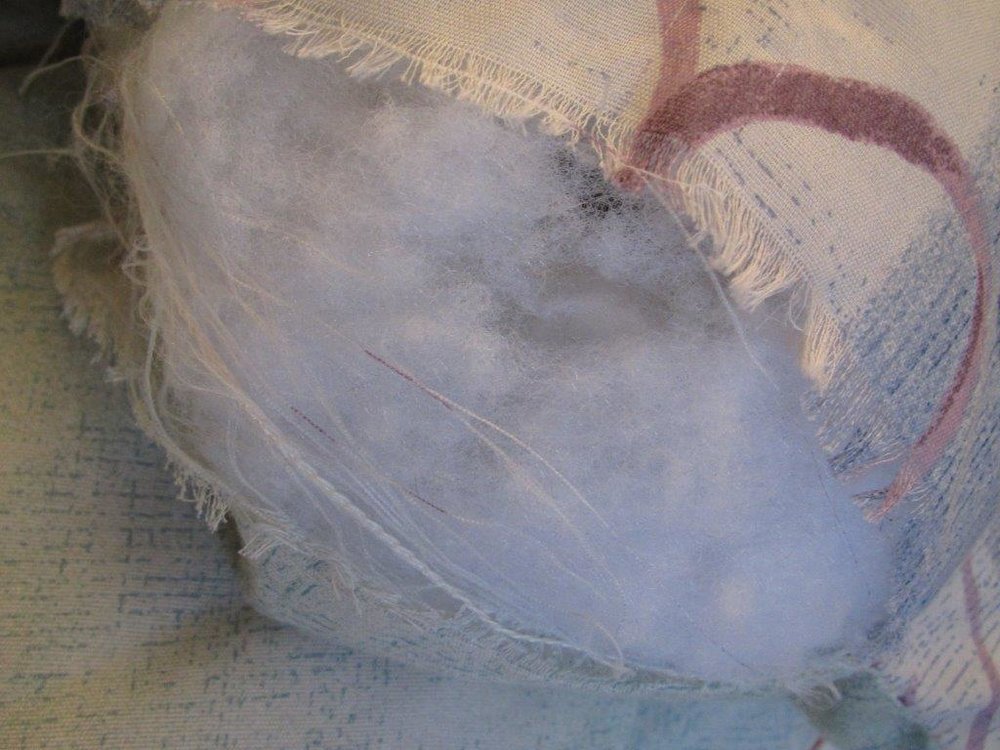 The last time we laundered a comforter used in the guest room - a side seam had come open and the stuffing was hanging out. Having recently discovered that this particular comforter was just the right size and thickness to make the sofabed comfortable for an adult, I decided it was worth mending.
The last time we laundered a comforter used in the guest room - a side seam had come open and the stuffing was hanging out. Having recently discovered that this particular comforter was just the right size and thickness to make the sofabed comfortable for an adult, I decided it was worth mending.
I sat in a rocking chair beside a window looking out on the gray, rainy day…with the mound of comforter positioned so that I could pin the seam closed and stitch it up. When I got started, I realized that the fabric of the 15 year old comforter was not in the best shape…..but the mending will probably get it through a few more washings. Mending was faster than buying a new comforter (and cost less too).
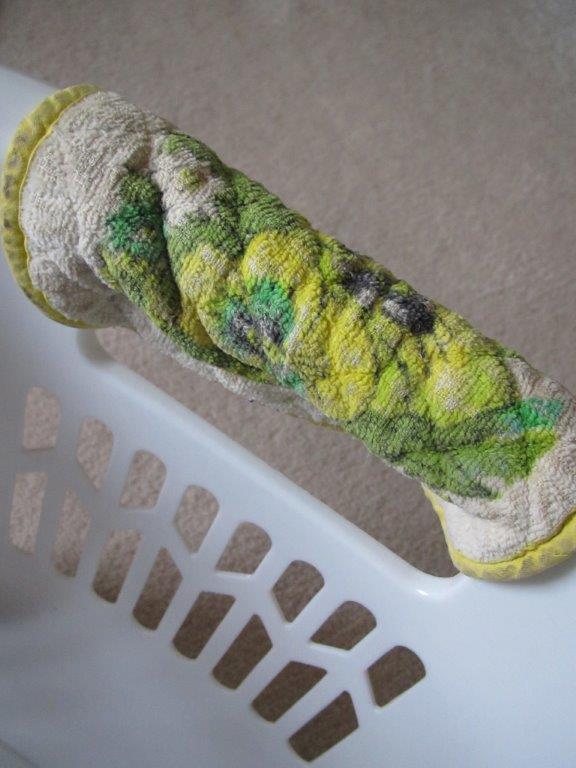 Another mending job for the day was to re-stitch the hotpad I had put around a handle of the laundry basket after the grip had broken. The original work had been done about 10 years ago and the knot of the hand sewn edge had unwound. The pad had extended the life of the basket since otherwise the sharp edge of the plastic made it very uncomfortable to carry. Now - the laundry basket handle padding is good for many more years after the re-stitching today.
Another mending job for the day was to re-stitch the hotpad I had put around a handle of the laundry basket after the grip had broken. The original work had been done about 10 years ago and the knot of the hand sewn edge had unwound. The pad had extended the life of the basket since otherwise the sharp edge of the plastic made it very uncomfortable to carry. Now - the laundry basket handle padding is good for many more years after the re-stitching today.
As one of my first projects after cleaning up my old microscope, I decided to look at some insect wings I had found in my yard last summer: a cicada and butterfly. I posted about the cicada back in August shortly after I found it in the grass. The wing was the only part of the butterfly I found; the rest of the insect must have been dinner for some other creature. Both wings had some dust accumulated but made easy subjects. I looked at them with the magnifying glass first - in the same way I had looked at the peacock feathers last week.
 The framework of the cicada wing near where it joined the body of the cicada was a nice green color and looked very sturdy in the magnifying glass (image above). When I looked at it with the microscope, bristles were evident and the color became even more sticking (three levels of magnification below).
The framework of the cicada wing near where it joined the body of the cicada was a nice green color and looked very sturdy in the magnifying glass (image above). When I looked at it with the microscope, bristles were evident and the color became even more sticking (three levels of magnification below).
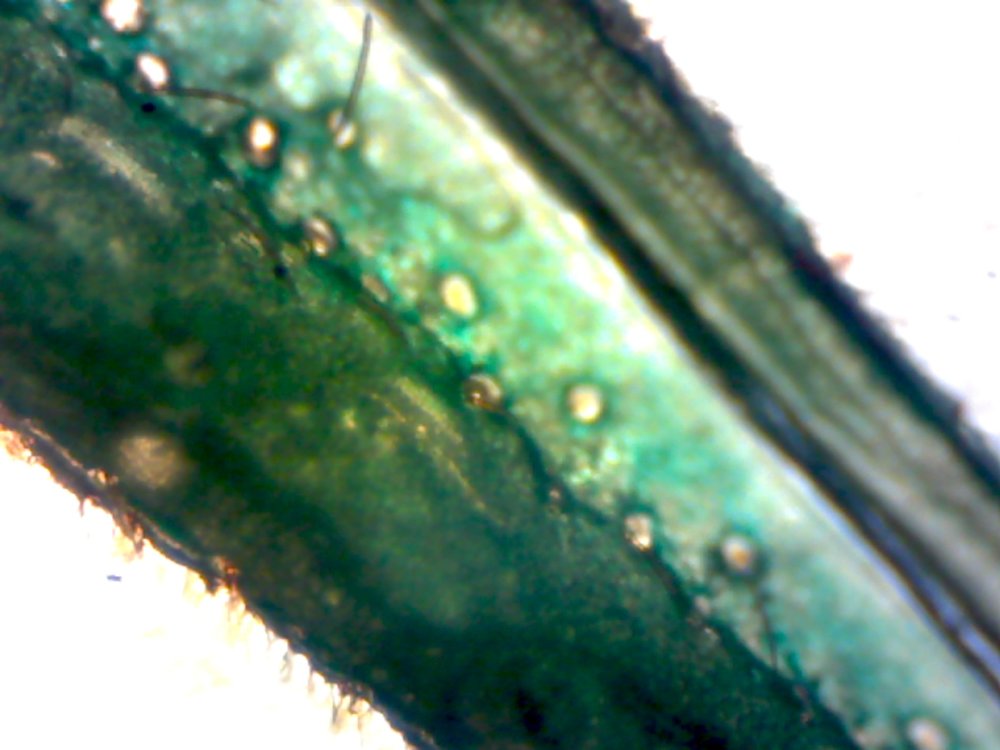
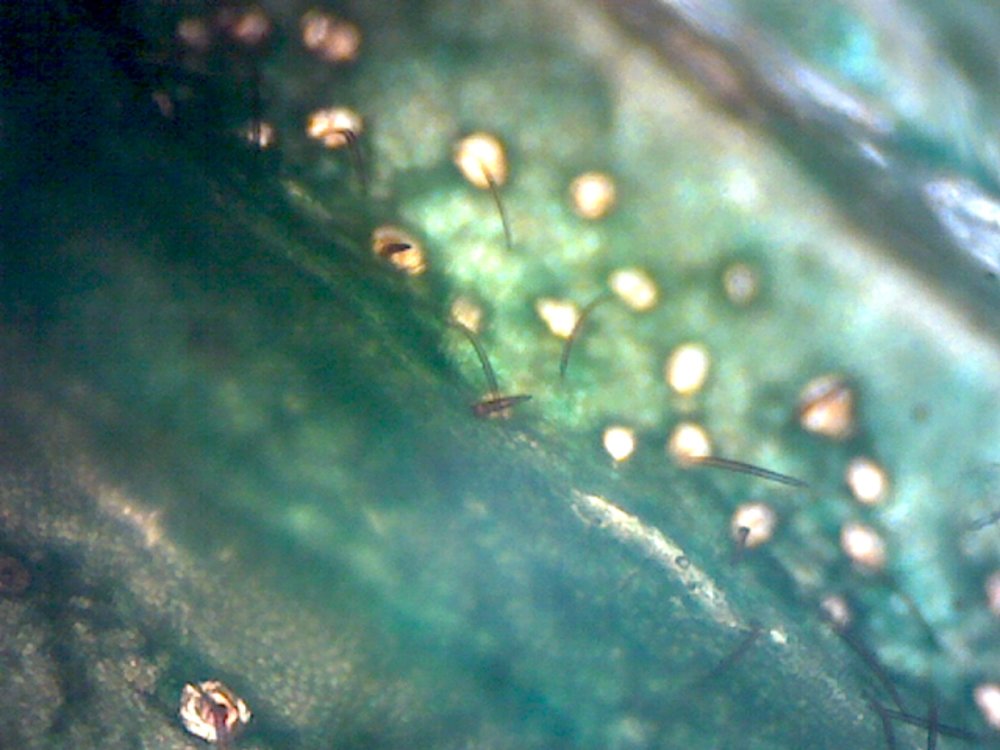
The structure of the butterfly wing using the magnifying glass was just barely evident(image below). It already does not look as smooth as a butterfly wing observed without magnification.
The three levels of magnification show below makes the scales that for the butterfly wing more obvious!
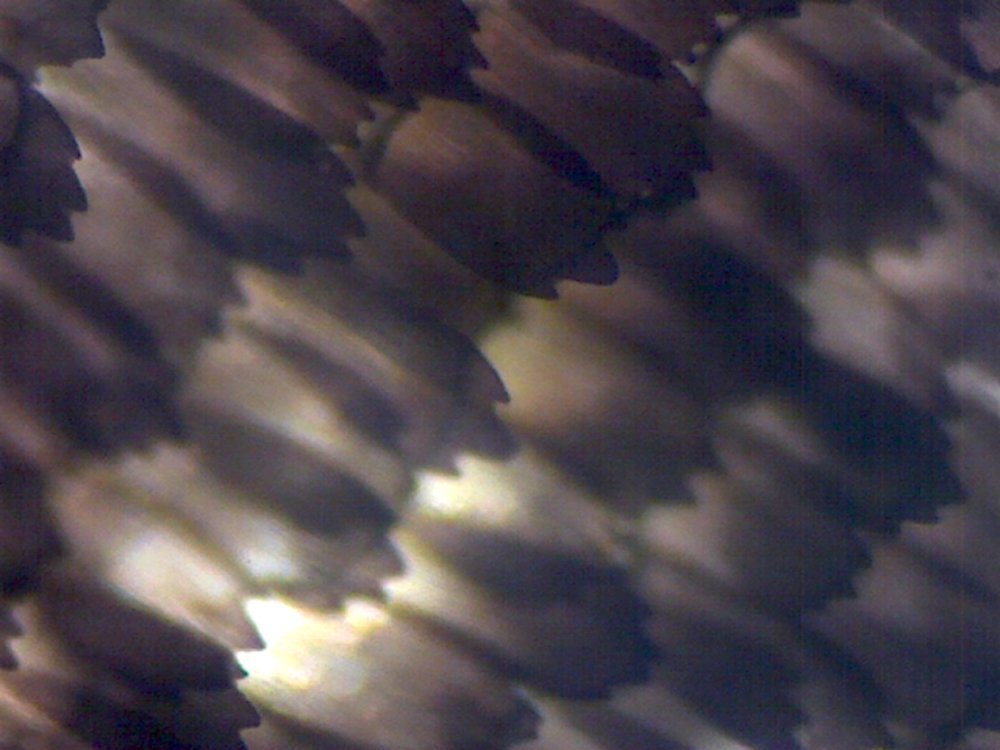

I’m through the first weeks of Coursera classes that started in January (posted about last month before they started). I thought that 4 courses might be a little overwhelming…..and that has turned out to be true. All of them are well done and the topics are well-honed to my interests; dropping one is not an option. So - I have a flurry of activity to keep up. I’ve dedicated one day a week to each course and then use the other three days to read extra resources and follow threads outside the course entirely.
The Roman Architecture course is furthest along. I find myself looking at buildings differently; there are still a lot of elements of Roman Architecture is buildings constructed long after the end of the Roman Empire. The Jefferson Memorial in Washington DC is one example (the picture below is one I took of the monument a few years ago during the spring cherry blossoming). One of the threads I followed outside the immediate course material this past week was finding out how the impluviums actual worked; it wasn’t just catching/holding water….it was often an pervious basin that allowed water to filter down into a cistern which was then used by the residence as a source of cool water!
The three other courses (How to Change the World, Moralities of Everyday Life, and An Introduction to the US Food System) are all thought provoking. There are times they seem to converge rom their varying perspectives on the same topic: how can individuals live in a way that is good for them and good for the rest of planet (people and everything else on Earth). They are all very focused on the present and the possible futures we are creating - sometimes with intention and sometimes not.
The whole motivation for taking classes is very different for me now than it was back in my 20s. Then I was focused on getting a degree that would lead into a career. Now I am takings classes primarily because I enjoy being a student! I am taking courses about things I was always interested in but didn’t need for my degrees. Since I am not interested in a grade or certificate, generally avoid tests and time consuming projects....focus instead on going off on tangents that spin out from the course materials. What a difference the Internet has made in how students can find answers to questions!
The items below were ‘the cream’ of the articles and websites I found this past week. Click on the light green text to look at the article.
Bomb-Sniffing Rats - An organization in Tanzania trains African giant pouched rats to detect landmines and tuberculosis. I was more interested in the TB aspect to this story rather than the bomb portion. Once trained, a rat can screen 100 samples of sputum for TB in 20 minutes!
The World as an Apple - A video using an apple to demonstrate how much arable land there is on earth from the American Farmland Trust
Interesting and Overlooked National Parks in America - Some of these have gone on my ‘future vacation’ list.
Fantastic Kaleidosopic Light Paintings Created in Camera - Long exposures and moving lights to create images.
How Parents and The Internet Transformed Clubfoot Treatment - Hurray for the non-surgical solution!
Global Footprint Calculator - If everyone lived the lifestyle of the average American, we would need 5 planets. I did the calculator for the way I live and the answer was 3.9 planets (so I am better than the average American but still pretty far from sustainable).
Setting the Context: A Brief History of EdTech - Infographic (click on the graphic to enlarge or get the graphic in PDF form here and enlarge within the reader) about how technology has evolved in society, business and education from the 1980s to today.
Intimate Portraits of Bees - From National Geographic.
Nature Soundmap - Recordings of natural sounds from around the globe. I listened to several and will come back to listen to more. They have that quality of being gently invigorating and relaxing at the same time.
Two recent posts from Richard Watson: Could the BRIC (N11 and MINT) wall fall? and Issue 34: Society and Culture (and other topics…listed on the right)
 I started a sweet potato vine back in October when I found a sweet potato had sprouted before I could eat it; I posted about the lush houseplant it has become earlier this month. Just after that post I discovered a russet potato that had sprouted. I cut of the end that had sprouted and put it in the same large pot as the sweet potato and it is growing very rapidly. The two short stalks to the left in the picture above are the russet potato. The sweet potato vine winds around the pot and some of its leaves are visible to right.
I started a sweet potato vine back in October when I found a sweet potato had sprouted before I could eat it; I posted about the lush houseplant it has become earlier this month. Just after that post I discovered a russet potato that had sprouted. I cut of the end that had sprouted and put it in the same large pot as the sweet potato and it is growing very rapidly. The two short stalks to the left in the picture above are the russet potato. The sweet potato vine winds around the pot and some of its leaves are visible to right.
Tomorrow I’m going to rig a grow light so that both plants with thrive until I can put them outdoors for the summer. The pot is large but maybe not large enough for both of them!
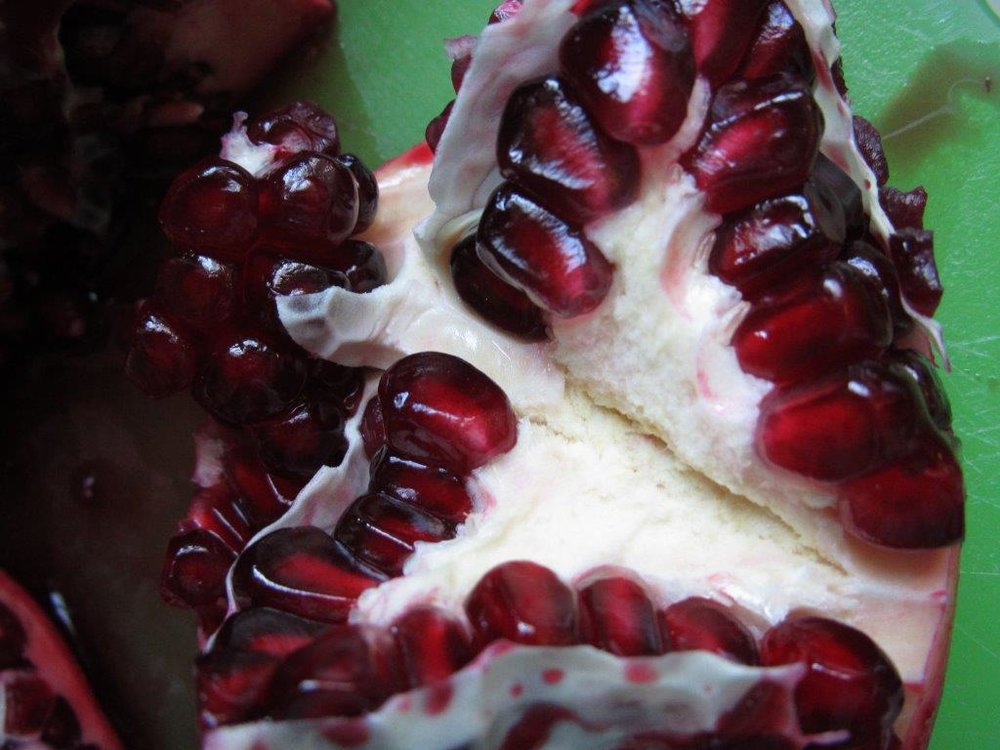 Today I am thinking about foods that I am eating more frequently now that I was 5 years ago. Some are foods that are new to me within this time period. Some of the foods are ones that I’ve always eaten but I just each more of them now….or I buy different forms. My success in getting down to the ‘normal’ weight range for my height has a lot to do with the transformations I made in my diet. So - here is my list of the food I’m eating more this winter:
Today I am thinking about foods that I am eating more frequently now that I was 5 years ago. Some are foods that are new to me within this time period. Some of the foods are ones that I’ve always eaten but I just each more of them now….or I buy different forms. My success in getting down to the ‘normal’ weight range for my height has a lot to do with the transformations I made in my diet. So - here is my list of the food I’m eating more this winter:
Pomegranates. The pomegranate season is something I look forward to. I eat 1/4 at a time….and managed to eat one a week for almost the entire season. But they’ve only been available from regular grocery stores in recent years. The first one I ate was on a visit to my mother; it is an easy fruit to like immediately.
 Kale. Did you know that 1/4 cup of kale provides 131% of the Vitamin K daily requirement, 27% of Vitamin C, 28% of Copper and 12% of Vitamin A? It is a powerhouse leafy green. I use it in the winter time in soups and stir fries. I’d seen it in winter gardens long before I found it in the grocery and decided to try it in food. I prefer it cooked so I eat it more frequently in winter.
Kale. Did you know that 1/4 cup of kale provides 131% of the Vitamin K daily requirement, 27% of Vitamin C, 28% of Copper and 12% of Vitamin A? It is a powerhouse leafy green. I use it in the winter time in soups and stir fries. I’d seen it in winter gardens long before I found it in the grocery and decided to try it in food. I prefer it cooked so I eat it more frequently in winter.
Mushrooms. I’ve purchased and eaten mushroom for a long time but have only recently started eating them more often. They are rich sources of Riboflavin, Niacin, and Pantothenic Acid as well as minerals like Copper and Selenium….and they contain protein too. I like them better in stir fries than I do raw….and I buy another package virtually every time I go to the grocery store.
 Bell peppers. Until recently, I’ve generally eaten the green bell peppers but the packages of yellow, orange, red, and green peppers are what I have been buying recently. They all add color to stir fries - and the strips can be used to dip hummus during the summer.
Bell peppers. Until recently, I’ve generally eaten the green bell peppers but the packages of yellow, orange, red, and green peppers are what I have been buying recently. They all add color to stir fries - and the strips can be used to dip hummus during the summer.
Almond milk. I switched from cow’s milk to fortified almond milk a few years ago…and like it well enough to no longer need to take a calcium supplement!
Soy nuts. I like dry roast soy nuts. They are high in protein as well as good quality fats. They've replaced dry roasted peanuts almost entirely in my diet over the past year.
 Quinoa. A grain that is a complete protein (i.e. includes all the essential amino acids)! And it cooks quickly too. I use it instead of rice under stir fry, in salads instead of pasta, and for breakfast instead of oatmeal or packaged cereals. It is my favorite grain. Quinoa has only recently become available in the grocery store.
Quinoa. A grain that is a complete protein (i.e. includes all the essential amino acids)! And it cooks quickly too. I use it instead of rice under stir fry, in salads instead of pasta, and for breakfast instead of oatmeal or packaged cereals. It is my favorite grain. Quinoa has only recently become available in the grocery store.
Chia seeds. I tend to have a tablespoon of chia seeds with my almond milk almost every morning. It is quite a nutritional boost: Omega 3 fats, protein, and minerals like calcium, copper, iron, magnesium, manganese, phosphorous, selenium, and zinc. When I first tried chia seeds back in early 2012, I had to order them. Now they are available in my grocery store.
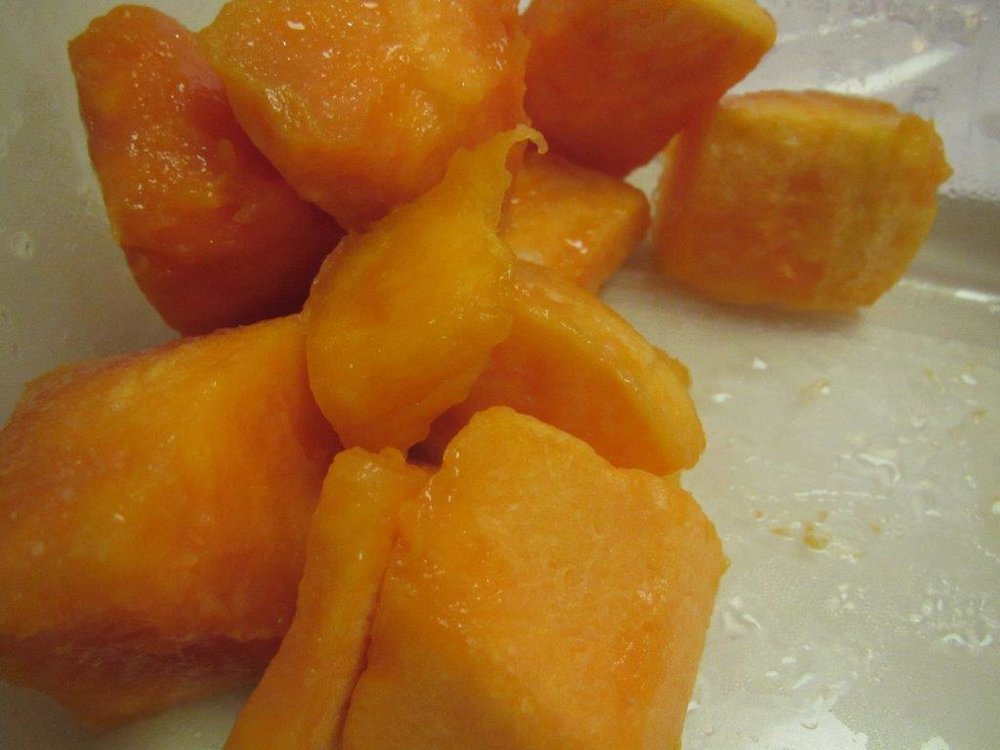 Butternut squash. For some reason, I tended to buy acorn squash if I bought winter squash at all. Then several years ago, I discovered butternut squash and now I buy it exclusively. I helps that the grocery store has packages of the squash already cut into chunks - perfect for roasting in the oven or cooking in broth to make a soup.
Butternut squash. For some reason, I tended to buy acorn squash if I bought winter squash at all. Then several years ago, I discovered butternut squash and now I buy it exclusively. I helps that the grocery store has packages of the squash already cut into chunks - perfect for roasting in the oven or cooking in broth to make a soup.
Plain yogurt. I used to always buy flavored yogurt….until I discovered how easy it was to make smoothies with plain yogurt and fruit. This winter I have been heating up frozen blueberries in the microwave and then putting a dollop of plain yogurt on top. Yummy….and I like the pretty purple it becomes when it is stirred into the blueberries.
Organic celery, oranges, beef, poultry, eggs. I seem to be buying more and more organic items over the past few years….but for different reasons. Celery was the first item I started buying organic after I read about it containing so many pesticides; I eat more of it during the summer than I do in the winter. I buy organic oranges because I want to make zest from the skin…where most of the pesticides would reside in the regular oranges. The organic beef was recommended by my husband’s nutritionist and tastes better too; I really don’t want the antibiotics and hormones that are part of the regular beef. The same comment about antibiotics goes for poultry and eggs as well….plus organically raised chickens are not raised entirely in a cage. I’m sure that over time I’ll be buying more organic produce - particularly when the price difference is not very significant.
What about you? Has your food consumption changed in the past 5 years?
Looking around my closet - I find quite a few fabrics with botanical images.
Some images are made with embroidery - done with a machine like on the neckline of a dressy T-shirt and big shirt….or hand done on the artisan shirt.
There is a saguaro cactus made with points of metal on a black T-shirt.
There is a poinsettia made with folds of a one-size-fits-all top. The picture in the slide show below is the top when it was on the hanger. There is additional white that shows when it is on a person.
I bought a skirt with a red and black border at the thrift store. The flowers are glittery while the background leaves are black - very dramatic.
I like the rose of the tapestry jacket…..and based on the comments I get when I wear it, others do too.
All in all - I like the plant images on clothes. How many botanical fabrics do you find in your closet?
Previous post on Botanical Print Fabrics: June 2012
Over a year ago I posted about finding something to celebrate each day. It’s an easy thing for me to do and the habit of writing it down reminds me to be grateful for these and a myriad of other things in my life. This month has been full of ‘little celebrations;’ here are my top 10 for January 2014. I’ve grouped them into 4 categories this month: food, my past, looking outdoors and learning something new.
Food
Scones. I’m not sure why I thought scones were too difficult for my cooking skills….but I avoided trying to make them for long time until I saw a recipe that used a food processor for the hardest part! Now I make them a couple of times a month and vary the recipe. The original was pumpkin and ginger. The scones I celebrated this month were raisin and ginger (I like the slivers of crystallized ginger so they are part of the ‘basics’ for all my scones!
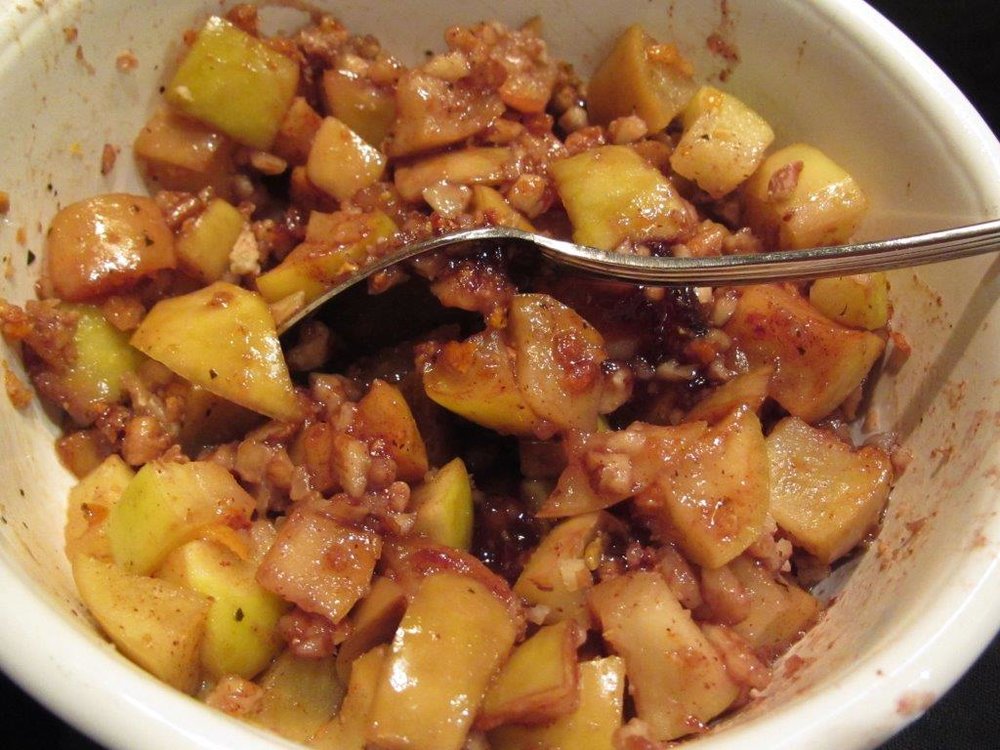 Baked Apples. I’ve always liked baked apples but I tend to forget about them. This January we had apples that needed to be used up quickly….so I got back in the habit. I had baked apples three days in a row! I bake the in the microwave for 2 minutes then add other ingredients before microwaving for another 2 minutes. My favorite ‘other ingredients’ are orange zest, pecans, and marmalade!
Baked Apples. I’ve always liked baked apples but I tend to forget about them. This January we had apples that needed to be used up quickly….so I got back in the habit. I had baked apples three days in a row! I bake the in the microwave for 2 minutes then add other ingredients before microwaving for another 2 minutes. My favorite ‘other ingredients’ are orange zest, pecans, and marmalade!
Homemade soups. Soup is my favorite food on cold days - and I never buy soups in cans these days. Many times I enjoy the leftovers used in soups more than the original meal they came from!
My Past
Wedding Anniversary. I celebrated over 40 years of marriage this month. Noting the date always reminds me of the broader need to celebrate and appreciate the durability of our family ties overall.
Friend from Long Ago. Rediscovering a friend from a long time ago is such a pleasure. It is invigorating to rediscover that the kernel of our younger selves is still within us!
Look Outdoors
This January has been too cold here in Maryland to do much outdoors….but the views through windows have been intriguing.
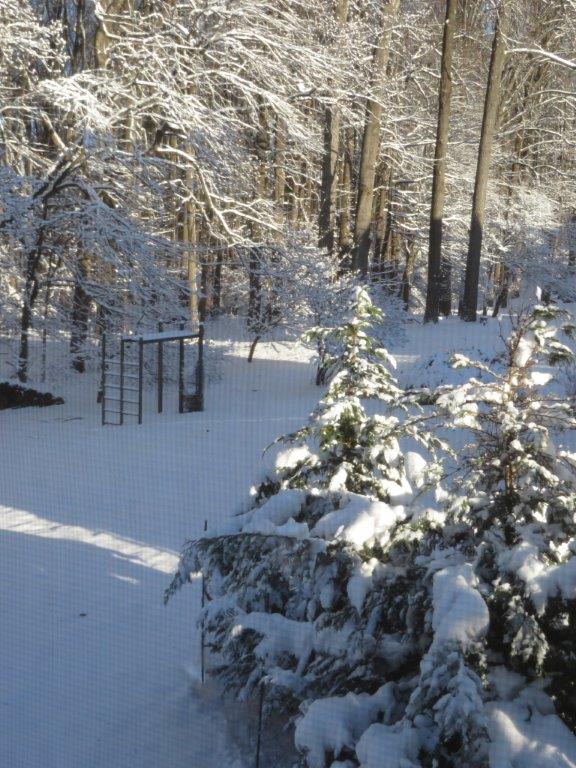 Snow. The snow has stayed on the ground for a long time. At first it is pristine and there are bits on the larger branches of the trees. Then the tracks of deer and squirrels are evident the snow on the trees either melts or is blown away.
Snow. The snow has stayed on the ground for a long time. At first it is pristine and there are bits on the larger branches of the trees. Then the tracks of deer and squirrels are evident the snow on the trees either melts or is blown away.
Fog in the forest. One morning the humidity and temperature combined to create a dense fog. The forest behind out house looked as if it were holding the fog in its branches.
 Robins. The flock of robins from a few days ago was a pleasant surprise.
Robins. The flock of robins from a few days ago was a pleasant surprise.
Learning Something New
The new semester on Coursera. I’ll write a longer post early next month …when I’ll have more experience with the courses. What I am celebrating right now is that the first week of the courses I’ve started has been so good!
Soil science. I went to a lecture on this topic and was surprised at how much I learned…..and that I followed up to check the soil suitability for my neighborhood (It was quite a relief to know that the soil was suitable for houses with basements!).
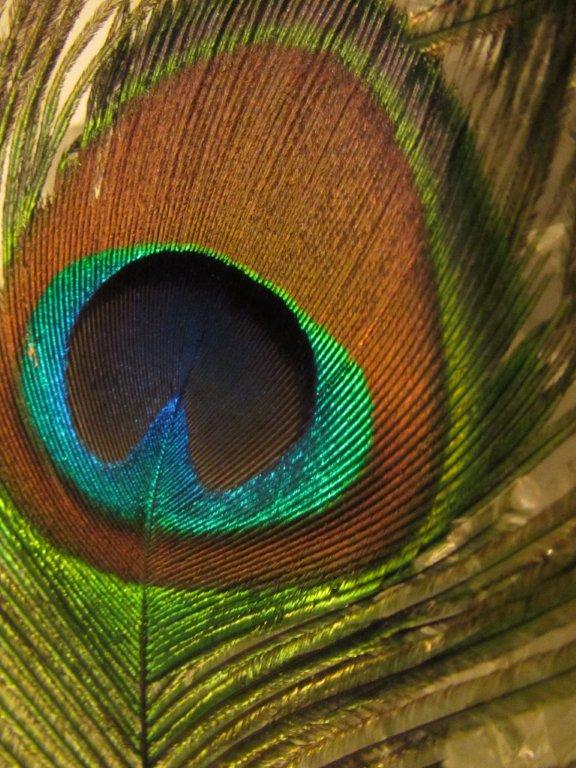
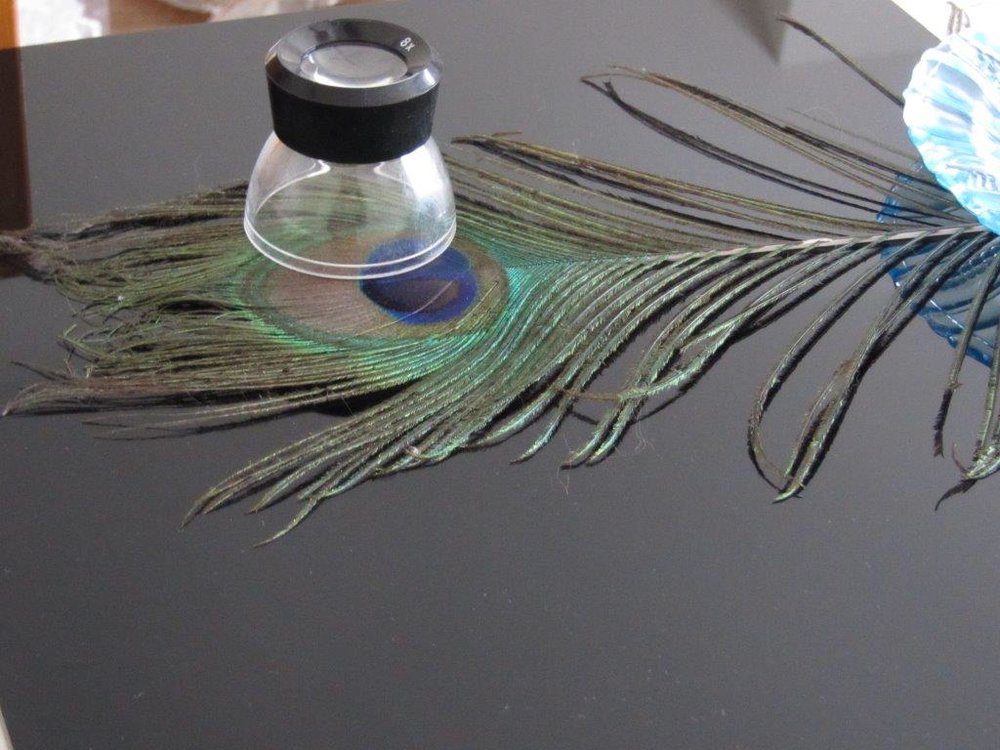
I’ve posted about peacock feathers before. I have several vases of them around my house so they were readily available on a recent cold afternoon when I wanted a photography project. I decided to try photographing through a small magnifying class. I used both a black and white piece of acrylic for the photographic platform. The resulting images were round (the field of view of the magnifying glass. I then clipped the best portions of the resulting images for the slide show below.
It was very obvious how much of the color in peacock feathers is structural rather than pigment. The angle of light and the camera caused a quick change from drab brown to iridescent green and blue. I was pleased with the results with the magnifying glass and am anxious to try the microscope soon.
 Pancakes are one of my favorite meals, any time. Last night - we wanted something warm for dinner because outside is was so cold and snowy; we also needed a comfort food after hearing the news about the shootings at Columbia Mall which is not that far from where we live. Pancakes are both - warming and comforting.
Pancakes are one of my favorite meals, any time. Last night - we wanted something warm for dinner because outside is was so cold and snowy; we also needed a comfort food after hearing the news about the shootings at Columbia Mall which is not that far from where we live. Pancakes are both - warming and comforting.
I make buttermilk pancakes using the recipe on the powdered buttermilk package; the only change is I make half the flour whole wheat rather than all-purpose….and I add a tablespoon of flaxseed meal. My husband topped his pancakes with butter and maple syrup; turkey sausage completed his meal.
I topped my pancakes with a baked apple concoction:

Tasty!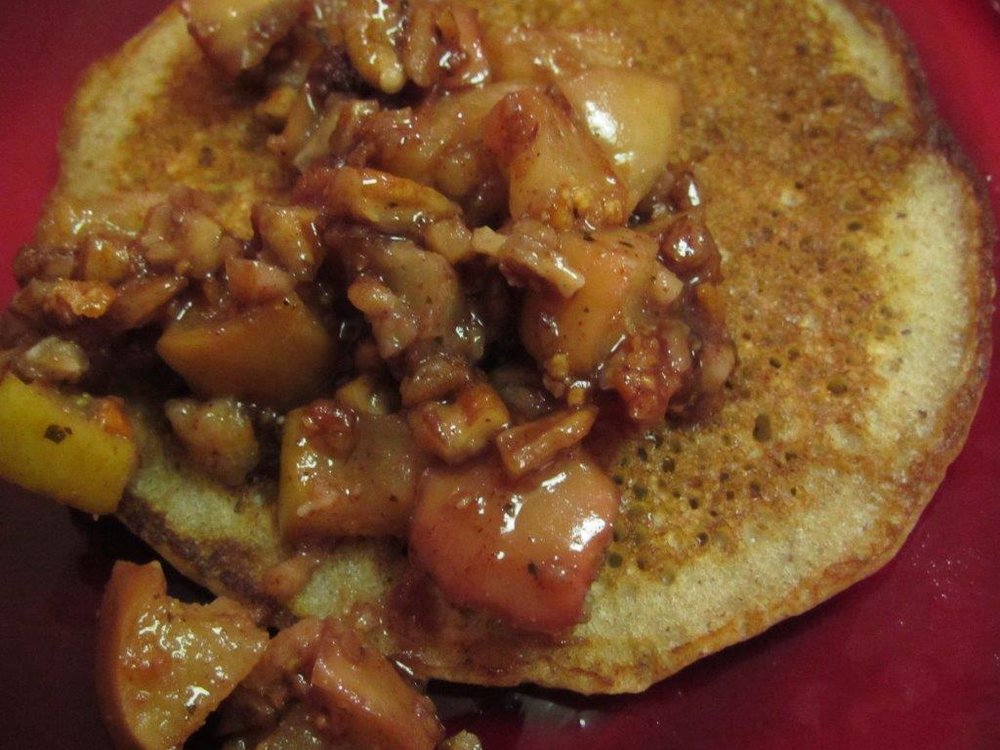
Celebrating the whole of life....
Thanks for visiting my blog! Enjoy the photo picks from last month:
Copyright © 2024, Gwen Morrison. All rights reserved.
Powered by Squarespace.